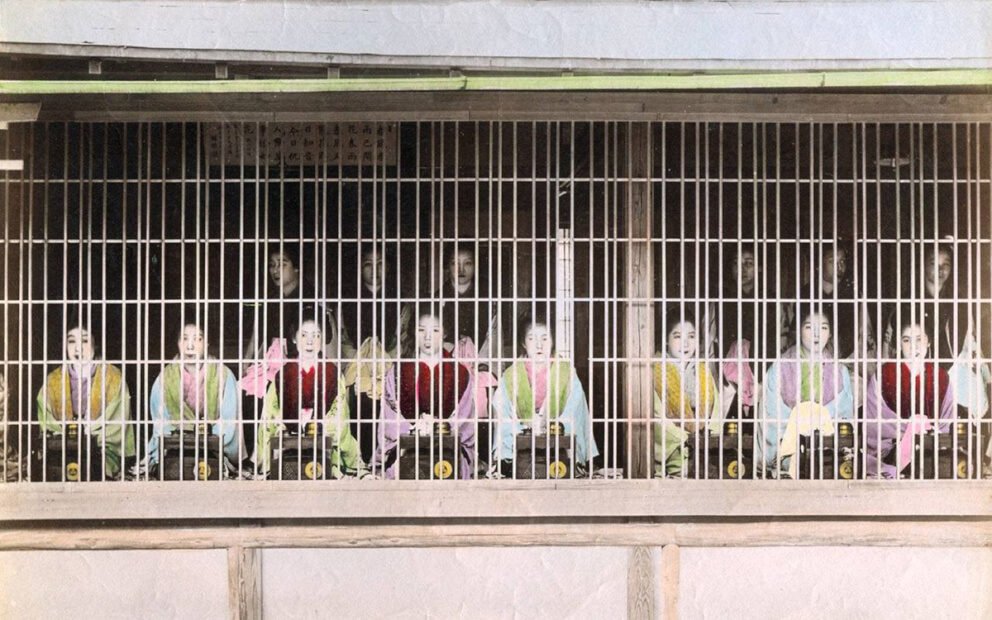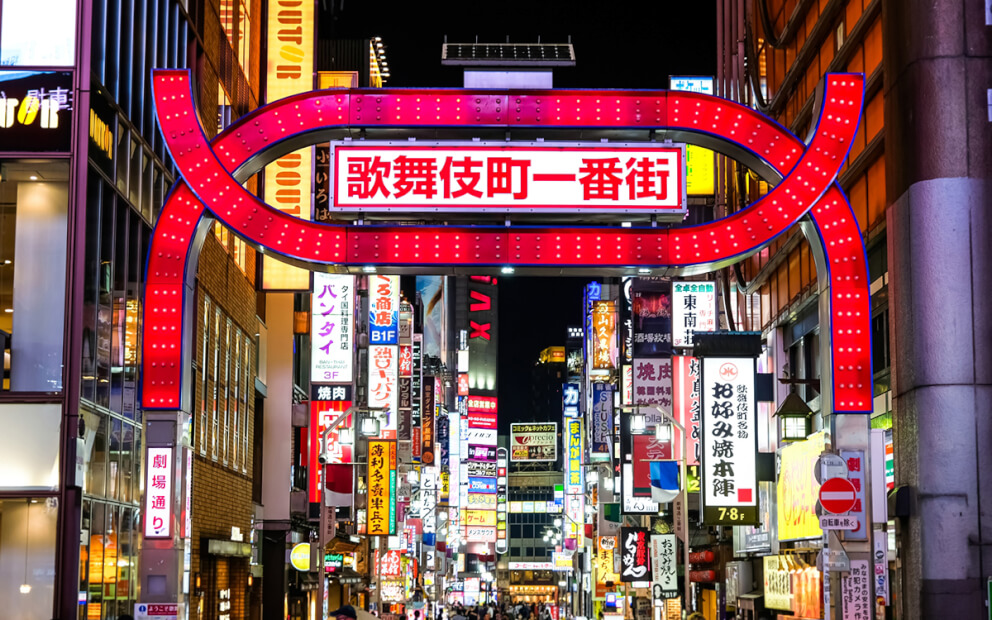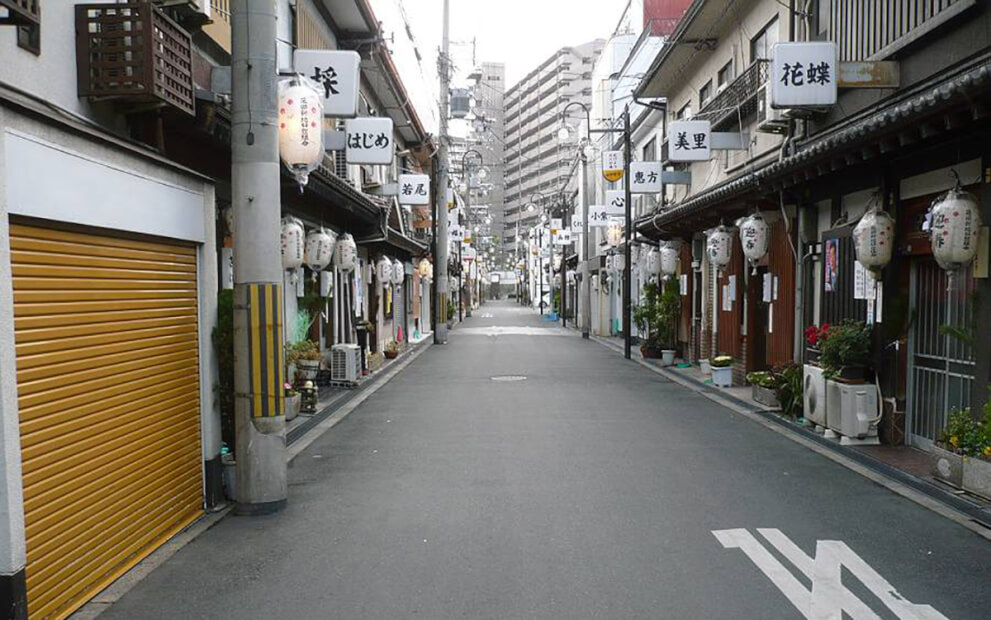Ornately-dressed women, discrete well-off businessmen, art, performance and slavery… The stories that surround Japan’s historic red-light districts may seem more like movie plotlines than anything else, but the truth of what occurred in these secretive streets inspired an important cultural legacy that continues even to this day.
Yoshiwara

If you’ve ever watched the cult-classic 1927 film ‘Metropolis’, you may remember the nightclub known as ‘Yoshiwara’ where men found themselves entranced by the captivating performance of the evil Maria. What you may not be aware of, however, is that this location was inspired by the real Yoshiwara – Tokyo’s most famous and popular red-light district.
The history of Yoshiwara dates back to the early 1600s, when Japan’s Edo Shogun demanded that prostitution be confined to one location as a way of controlling its’ spread within the country. The first Yoshiwara was established in 1617, but after a fire destroyed most of its buildings in 1956, it was then relocated to the well-known district of Sensoji in Asakusa.
Here, a thriving trade of desire was born. Yoshiwara was separated from normal society by a moat (earning it the name of ‘the floating world’) and by the 18th century had become home to around 3000 women. These women varied from highly-educated courtesan, who received training in art and literacy and were even permitted to run their own businesses, to young girls sold into slavery by debt-ridden parents and forced to endure a lifetime of servitude. While some of girls were lucky enough to climb ranks and learn the trade of the courtesan in the form of an apprenticeship, others lived and died riddled with debt and misfortune; by the year 1900, it is believed that around 9000 women were living and working in the district across all ranks.
It wasn’t just the sex trade which flourished within the floating world – the area soon became popular with artists, musicians and performers looking to challenge the boundaries of creativity and, as a result, popular fashion, culture and kabuki (a traditional and elaborate form of dance-based drama) was highly influenced by the ‘water trade’ of Yoshiwara’s secretive streets.
Yoshiwara remained busy right up until 1958, when the government enforced new anti-prostitution laws. As a result, the trade that had thrived along the district’s streets was forced underground and the area renamed in the hopes of leaving it’s dark past behind. Yet while Yoshiwara itself may no longer exist, the legacy it inspired still places an important role in Tokyo’s art, pop-culture and nightlife today.
Kabukicho

When the Tokyo neighbourhood of Tsunohazu was destroyed during the second world war, the council in charge of reconstructing the surrounding district – Shinjuku – decided that the site should become the home of a new theatre dedicated to the art of Kabuki, a traditional Japanese dance-based drama. The area was renamed to reflect its new intended use, and ‘Kabukicho’ was born; this new name remains even now, long after the theatre project was abandoned and scrapped.
While it may not have become Tokyo’s home of dance-drama, Kabukicho soon flourished as an entertainment district hosting Enka (a form of popular Japanese music) shows and cinemas and, by the 1980s, game arcades and discos that were restricted by laws governing what times they could open and close.
Around this time, another trade began to develop along the streets of Kabukicho. Clubs filled with hosts and hostesses (attractive men and women who will spend time laughing and joking with you for a hefty fee) and seemingly-friendly establishments that tricked patrons into racking up high and unexpected bills began to take over the area, and Shinjuku’s popular nightlife district earned a ‘dangerous’ reputation that still causes people to avoid it even today.
Today, the curiosity of tourists drawn to explore the ‘forbidden’ streets has led to Kabukicho becoming a popular destination for visitors, and when lights go down, the bright neon-coloured signs and attractive advertisements of shops, restaurants, bars and arcades draw a steady stream of customers. Tours are held in multiple languages to introduce tourists to all that Kabukicho has to offer and Godzilla, who dwells in the towering Hotel Gracery, looms over all the excitement and drama that occurs below.
While Kabukicho is still home to plenty of host clubs and the streets are filled with ‘promoters’ who seek to encourage tourists to the aforementioned establishments that will trick them out of tens of thousands of yen (or more), there’s still plenty to do in Kabukicho – the streets that never sleep.
Across Japan

Outside of Tokyo’s Yoshiwara and Kabukicho, plenty of nightlife and red light districts have existed across Japan. Tobita Shinchi, the red-light district of Osaka, was founded in the 1900s and continued to exist after the enforcement of anti-prostitution laws thanks to establishments rebranding as ‘restaurants’ and referring to the people employed there as waitresses. While not expressly designed to be a tourist attraction, little about the area has changed in the past 100 years and as a result it has become a popular location for a day time stroll to take in some older Japanese architecture and what remains of ornate old sign boards and lanterns.
Hiroshima’s Yagenbori is one of the largest red-light districts in western Japan and, despite looking rather unassuming during the day, bustles and heaves with visitors at night. Nagarekawa, once a popular location for Hiroshima’s artists, has become a nightlife zone filled with bars, restaurants, casinos and more. This is where locals come to party and dance, and the okonomiyaki savory pancakes sold in the area are said to be the ideal and unforgettable way to end a lively night out.
Keep in mind
Japan is considered a very safe country and many of the locations mentioned in this article are growing into popular tourist locations, but visitors should always take care to stay safe and avoid any situations that may result in trouble.
One of the best ways to experience the history and cultural significance of these areas is on a guided tour with a licensed and informed guide who will be able to introduce you to the location in a safe and expert manner. It’s important to always show the same level of caution (or more) that you would when back in your own country, and to avoid any situations where you could accidentally take part in illegal activity.
For more information, or to learn how to experience Japanese nightlife safely, get in touch with Heartland Japan today!
